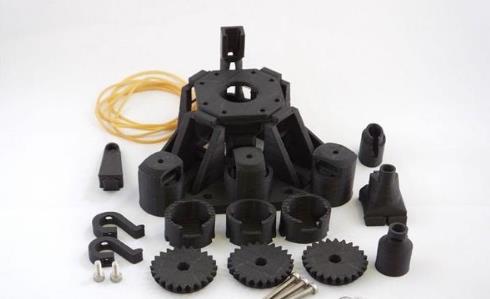In recent years, 3D printing technology has been widely used in various fields such as aviation, shipbuilding, and automobile manufacturing. Many large domestic manufacturing companies, such as Haier, COMAC, and XCMG, have gradually incorporated 3D printing into R & D In the process of trial production. However, compared with the US manufacturing industry, especially the Fortune 500 industrial giants are 3D printing.

Investment, there is still a certain gap between the two countries. The US manufacturing companies in the Fortune 500 use 3D printing technology for production process improvement and innovation, or they will have an impact on a series of high-end manufacturing products in China, including large aircraft.
General Electric Company (26th in the Fortune 500 in 2016)
In 2012, it acquired Morris Technology, a 3D printing company based in Cincinnati, USA. The company's technology helped GE reduce the manufacturing time and cost of aeroengine fuel nozzles. In 2015, General Electric used a 3D printer to build a jet engine. In this project, GE engineers used a 3D printer to make the engine parts. The printer used a laser to fuse thin layers of metal together. These differently shaped metal layers are stacked and melted to form all parts of the engine-including the compressor, turbine, nozzles and combustion chamber. GE recently completed the acquisition of Swedish 3D printing company Arcam (2017TCT Asia Exhibitor, booth number N5-F52) and Germany ConceptLaser (2017TCT Asia Exhibitor, booth number N5-G16), and established a new GEAdditive company. Since 2010, GE has invested more than $ 1.5 billion in the field of 3D printing. Six GE companies have also been developing additive applications. In addition, GE has created new service applications and obtained 346 patents in the field of additive manufacturing metal powders.
Boeing (61st in Fortune 500 in 2016)
Boeing has been using 3D printing technology since 1997. More than 20,000 metal and non-metal parts have been 3D printed on 10 different aircraft such as 737, 747, 787, and 777. In 2015, Boeing submitted a patent application for 3D printing aircraft parts. This patent embodies Boeing's completion of aviation spare parts through 3D printing, reducing the spare parts inventory of air operators, thereby reducing operator costs. In 2016, Boeing also developed 3D printed heat-resistant ceramics for the manufacture of components such as engine hot-end parts, rocket nozzles and nose cones. Its complex shape cannot be cast using traditional ceramic technology, but can be completed using 3D printing technology. At present, Boeing is also collaborating with the Oak Ridge National Laboratory in the United States to develop and print the wing structure of the next-generation Dreamliner Boeing 777X.
Honeywell (No. 256 of the Fortune 500 in 2016)
Honeywell, a diversified, high-tech advanced manufacturing company headquartered in the United States, is also conducting research on 3D printing in four additive manufacturing technology centers, which are located in Phoenix, Bangalore, India, and Brno, Czech Republic. And Shanghai, China. The Shanghai Additive Manufacturing Technology Center was established in 2014 to provide rapid prototyping and rapid tooling services to the Asia-Pacific market. Like other global laboratories, it also focuses on additive manufacturing technology research. The center can print parts with a maximum length, width and height of 25cmX25cmX32.5cm. It is currently shared by Honeywell's two main business segments, aerospace and automotive. The company plans to realize that 40% of its parts will be able to be produced using 3D printing technology by 2020. Honeywell mainly uses EOS equipment. 
Editor in charge: Liu Qingqing
AUTRENDS INTERNATIONAL LIMITED , https://www.petspetsaccessories.com